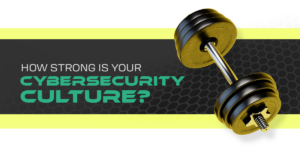
In today’s rapidly evolving threat landscape, employee cybersecurity training is crucial. It acts as the frontline defense against cyberattacks, empowering your workforce to identify and mitigate potential threats. However, to ensure the effectiveness of your training program, you should take all the steps necessary to avoid common mistakes that can undermine your efforts.
Let’s uncover these pitfalls and learn how to steer clear of them. By addressing challenges head-on, you can maximize the impact of your employee cybersecurity training.
Stay proactive and informed to create a culture of security awareness that empowers employees as vigilant defenders against cybercrime. Together, we’ll equip your workforce with the skills they need to keep your organization secure.
Mistakes to avoid
Don’t let these preventable mistakes hinder your cybersecurity initiatives:
Approaching security training as a one-off activity
Don’t treat cybersecurity training as a mere checkbox exercise. Instead, foster a culture of continuous learning by providing regular opportunities for your employees to stay updated on the latest threats and security best practices. Make security awareness an ongoing journey rather than a one-time event.
Delivering dull, outdated and unrelatable training
Engagement is vital to proper training. Avoid dry and obsolete content that fails to capture your employees’ attention. Instead, strive to provide training that is timely, engaging and relatable. Leverage interactive platforms and user-friendly tools to create an immersive learning experience that resonates with your team.
Measuring activity instead of behavior outcomes
Don’t focus solely on tracking training completion rates or the number of simulated phishing exercises. While these metrics provide some insight, they don’t paint the whole picture. Shift your focus to measuring behavior outcomes, demonstrating a true understanding of security principles and driving tangible changes in employee behavior.
Creating a culture of blame and distrust
Approach security training as an opportunity for growth and improvement rather than a blame game. Foster a supportive environment where employees feel comfortable reporting security concerns and asking questions. Encourage a sense of collective responsibility, emphasizing that cybersecurity is everyone’s job.
Lack of support and participation from leadership
Leadership plays a crucial role in setting the tone for your security training program. Without visible support and active participation from executives and managers, employees may perceive security as a low priority. Encourage leadership to champion security initiatives and actively engage in training, showcasing their commitment to protecting the organization.
Not seeking help when needed
Developing and managing a comprehensive training program can be challenging, especially with limited internal resources. Don’t hesitate to seek assistance from IT service providers, such as Databranch, who specialize in cybersecurity training. We can provide the expertise and guidance needed to implement a robust and effective program.
Partner to succeed
By overcoming the pitfalls mentioned above, you can establish a strong security culture within your organization. If you think you need support, then don’t wait. We’re here for you. Our experience and expertise are exactly what you need to turn the tide.
With our experts on your side, security training will be the last thing you need to worry about. Reach out to Databranch today at 716-373-4467 x6, [email protected] or visit us here to learn more about our Breach Secure Now platform.
Additionally, download our checklist titled “How Strong is Your Cybersecurity Culture?” to assess whether you are on the right track. Together, we can fortify your defenses and safeguard your business from evolving cyberthreats.
Experts stress the importance of fostering a robust cybersecurity culture to counter insider risks within organizations like yours. But how can you accomplish this and where do you even start? Use our checklist to determine how strong your security culture is and where you could strengthen it.How Strong is Your Cybersecurity Culture Checklist








